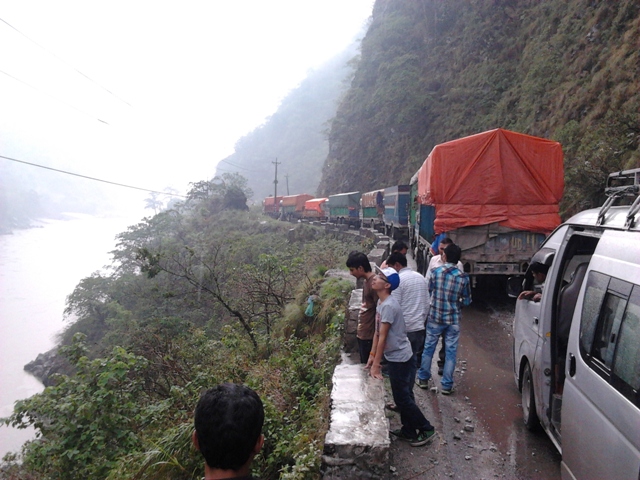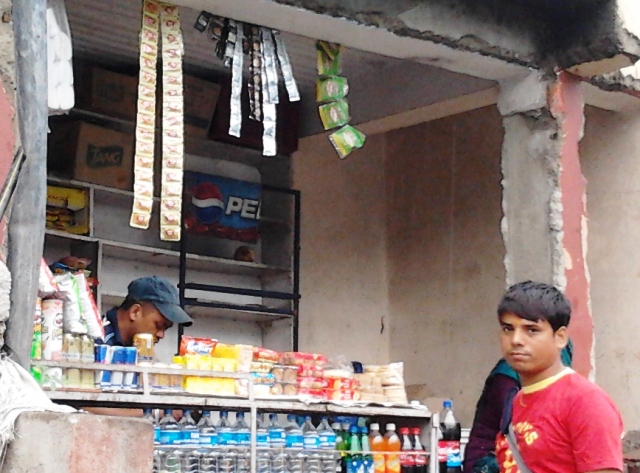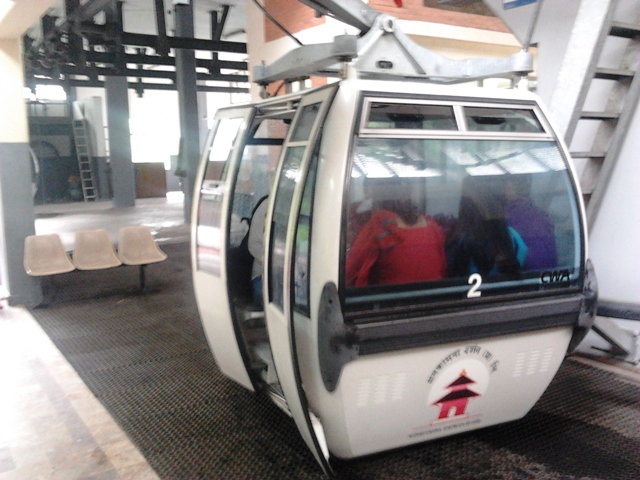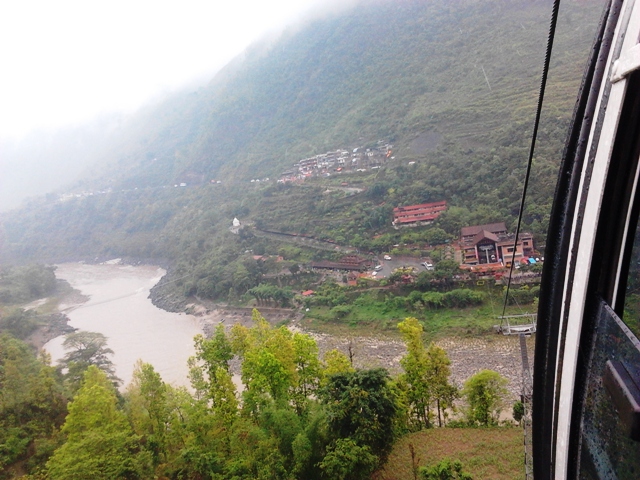This is Day 9 of Nepal Travelogue (May 21, 2013)
 |
| Mikael Enjoying the Hospitality Exchange |
Following an
eventful
jungle expedition at Chitwan National Park, we came back to Kathmandu last evening
and stayed at the same Budhanilkantha Family Kitchen for yet another night. The
same room which was alien and ghostly just one week back was giving us a cozy vibe,
partly because of the repeat experience and partly because of the caring Buddhist
family; Sonam, his mother and sister. They even especially bought a kiddies’ bedsheet
for our last night there and when we were leaving the whole family came outside
to see us off!
Otherwise
also, we generally found common Nepalese friendly and openhearted. One such
person was Shally,
a kindhearted Couchsurfer, who arranged to drop us personally to our next
second home – Kathrine’s
family where we would stay for the next few days – courtesy again
Couchsurfing.
Had it not
been an infringement in privacy, I could have dedicated this whole post to kind
Kathrine, sociable Zaeem, and their equally lovely son Ryan who quickly
accepted Misha and Mikael as his friends and was not hesitant in sharing his
toys!
The expat
family, who was living in an upscale Kthamandu neighborhood around Patan opened
their hearts and doors for us and walked extra miles to make all of us feel
comfortable. From the Swiss coffee to the mint flavored water and from those sumptuous
dinners to arranging for rides around the town, they raised the hospitality
bars too high. We also tried to reciprocate that by taking Pakistani gifts and
then Urooba also prepared Chicken Karhai later on, but obviously this was no
match of their generosity.
Apart from
shifting from Budhanilkantha to Patan, we did nothing much today and no photography. From tomorrow, it will be the beginning of Part 3 when we would explore the Kathmandu valley, attend the Budha Jayanti festival in
Bhaktapur, and visit the Nagarkot hill station till Day 14.So stay tuned for a another bunch of colorful posts.
Today’s Bills – in Nepali Rupees
| 200 | Gifts | Honey | ||
| 110 | Food | Milk, etc | ||
| 80 | Grocery | Including beard trimming! | ||
| 430 | Gifts | For local friends | ||
| 100 | Telephony | Mobile recharge | ||
| 130 | Gifts | Sweets for BFK staff! | ||
| 50 | Logistics | Microbus - Budhanilkantha to Koteshore | ||
| 600 | Accommodation | Hotel Room Charges | ||
| 500 | Food | Hotel Food Bill | ||
| 2200 | Total for May 21, 2013 | |||
| 27640 | Total as of Today |
Traveler’s Tip # 17: Hospitality Exchange
Friends
often ask how could we manage to travel frequently? Especially the money thing –
because traveling is considered an expensive endeavor. Some even suggest that we should rather save this money and perform Hajj first. So let me share the secret;
this is the online Hospitality
Exchange communities, especially Couchsurfing, which has enabled us
traveling without getting bankrupted. Idea is simple; you host members of the
community in your hometown, for free, and in return the community members welcome you at
their place, convenience permitting.
Initially, I
was a bit skeptical of the idea, due to security concerns mainly, but our first
experience, when we hosted a French
honeymooning couple on their Round the World road trip, was helpful in
removing some doubts. Now after some more experiences, of both hosting and
surfing, I can say this is not only a great way to save money while traveling
and travel more but also an authentic source of cultural exchange.
This is,
however, not as easy as it sounds, especially when you are travelling. First
you need to invest time in searching and reading profiles of potential hosts
before you start traveling. Second, you send requests mentioning your travel
plan and why are you interested in staying with a particular host. Finally you
patiently wait for a response, which is negative more often than not.
As everybody
has their own preferences, we prefer surfing with family friendly hosts only,
which limits our option so we often take resort to family run guesthouses. Even
then, extensive network of these communities is helpful to get insider tips,
before or during the trip, and if you are luckier you get in touch with someone
who may show you around!
Traveler’s Tip # 18: Beware of Touts and
Tourist Traps
While looking
for some help at Couchsurfing Kathmandu forum, I noticed that most of the group
members were there to find customers, which was a setback for me as this
community is built with the spirit of mutual support without seeking commercial
benefit.
These touts
were not limited to the internet as we were bugged almost everywhere in Nepal by touts
selling their touristy propositions hard. At times, this became unbearable. However,
I would not blame Nepalese alone for this menace because this happen at every
place which is a tourist target.
So if you
plan to go to Nepal, be aware of these touts. Try collecting information about
your trip before you travel because this is the information gap which leads to
a tourist trap. Always believe in your instincts and don’t lock-in to a deal
without haggling around. In the meantime, try to be respectful amd responsible and
as don’t throw away money just because you feel that your currency can buy a
hell lot of local Rupees!
We did not
encounter something dangerously bad; however, it is more about touts forcing
you to go to their preferred outlets or they will try to charge you more than the
market or try selling a souvenir at a ridiculous price. Whatever they do, they will be really compelling and so you need to be
firm and determined.





























